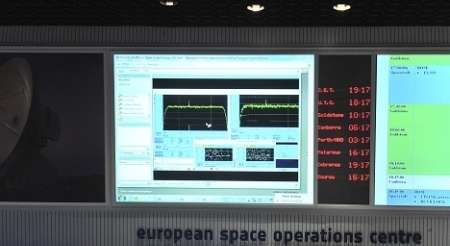Uppsala researchers study the transformation of a comet

In July, Rosetta is expected to send the first images of comet 67P/Churyumov-Gerasimenko's nucleus, as seen from a large distance. The space probe will enter an orbit around the comet nucleus in August, where it will remain for one and a half years while the comet approaches the sun. The camera on board has been built by a European consortium where Sweden has contributed several of the lens's filters. One of the leading researchers on the camera team, Hans Rickman at the Department of Physics and Astronomy, has also contributed to the selection of filters and overseen their manufacturing in Sweden. He and his Uppsala colleague Björn Davidsson will study the images to find out more about the comet's composition and what happens when the comet is gasified.
"By comparing the strength of light reflected by the comet at different wavelengths you can tell which type of material the comet consists of", says Björn Davidsson.
"We want to compare the observed outgassing with our mathematical models of vaporisation to understand the properties of the comet's surface layer. We will also analyse images of the comet's gas cloud which brings with it large amounts of dust particles. By comparing the particles' observed and predicted movements we get information about the properties of the driving gas."
Comets are remnants of the material which once shaped the planets in our solar system. Therefore the survey of the comet may shed new light on what happened when Earth formed. More detailed information will become available in November when the lander Philae will be deployed to the comet's surface.
"For the first time ever we will be able to study the composition, appearance, behaviour and inner structure of the comet nucleus in detail", says Björn Davidsson.
"It is a unique insight into a 4.6 billion year old world which will help us understand why the solar system is the way it is."
Provided by Uppsala University



















